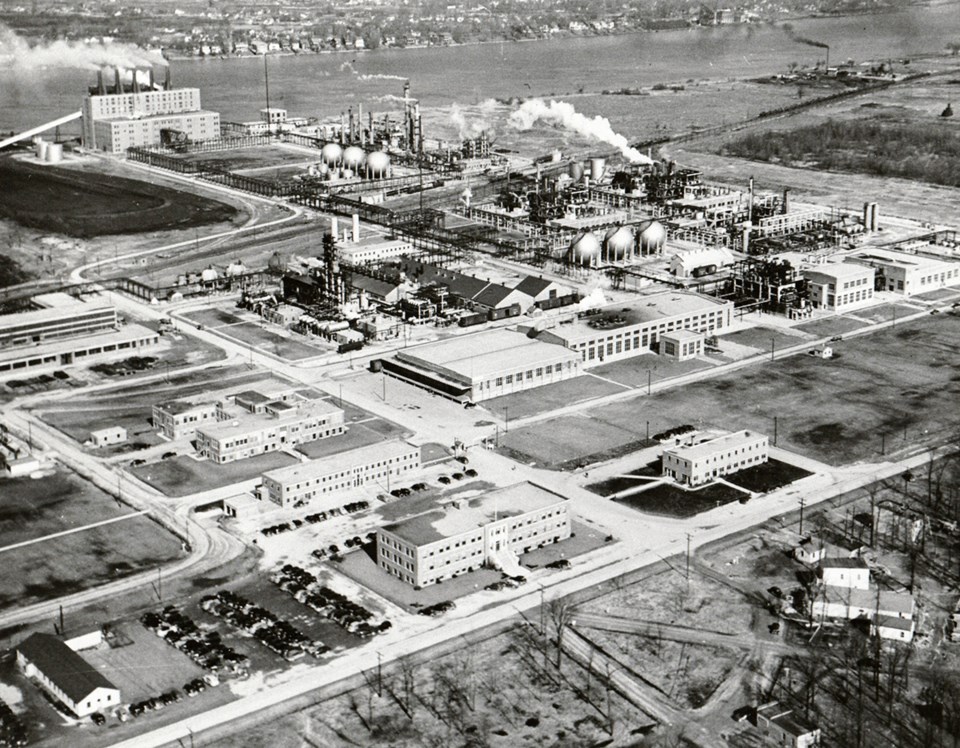 It was a time of peace, growth and prosperity; but also one of rumour, fear and paranoia. And they combined to produce one of the most frightening incidents in Sarnia’s history.
It was a time of peace, growth and prosperity; but also one of rumour, fear and paranoia. And they combined to produce one of the most frightening incidents in Sarnia’s history.
The era before the ‘Cold War’ had had its own moniker– the ‘Red Scare.’ From the late 1940s to the mid-1950s, communists, known as “Reds” for their allegiance to the red flag of the Soviet Union, were feared to be everywhere – and hiding in plain sight.
In the early days of Sarnia’s rapidly growing Chemical Valley that translated into fear of sabotage. Which explains why the events of May 6, 1951 were so terrifying.
It began about 10:30 p.m. when an unusually large discharge occurred in a flare stack at the Polymer synthetic rubber plant. Startled process operators knew something had gone wrong, but before they could react a powerful explosion erupted in the north end of the butadiene extraction unit.
The blast was massive and it rocked the city. People as far away as Detroit and London heard the explosion’s roar. An enormous fireball erupted into the warm night sky, and its glow was seen 130 kilometres away.
Windows were shattered within a two-kilometre radius. In the adjacent village of Blue Water, terrified residents ran for safety as homes shook and buildings shifted on their foundation. The night sky lit up in a reddish glow.
Many in the city believed Sarnia had been struck by an atomic bomb. Frightened people bundled crying children into cars and fled the city for safety.
Others, believing half the city must have been wiped out, headed for the bright red glow of the explosion, jamming roads into the south end. Apparently oblivious to the danger of further explosions, as well as the existing fire, they clogged roads leading to the Polymer plant.
Cars parked on both sides of Highway 40 and crowds of curious spectators, many of them smoking, hung along the perimeter fences surrounding Polymer.
In the meantime, a convoy of ambulances, police and fire vehicles fought its way through the congestion to reach the scene. It took hours for police to untangle the traffic morass.
It was mayhem, in large part because the community had no emergency plan.
On the morning after the Polymer explosion, plant managers from Imperial Oil, Polymer and Dow Chemical met to discuss industry’s response to any future calamity.
The famous Polymer Explosion of 1951 led to the beginning of emergency planning in Sarnia. Within days, a Chemical Valley Traffic Control Committee had been formed and City Hall set up a firefighting mutual aid committee.
Eventually, they morphed into what today is known as Community Awareness Emergency Response, or CAER, which is charged with identifying potential risks and developing emergency plans around them.
